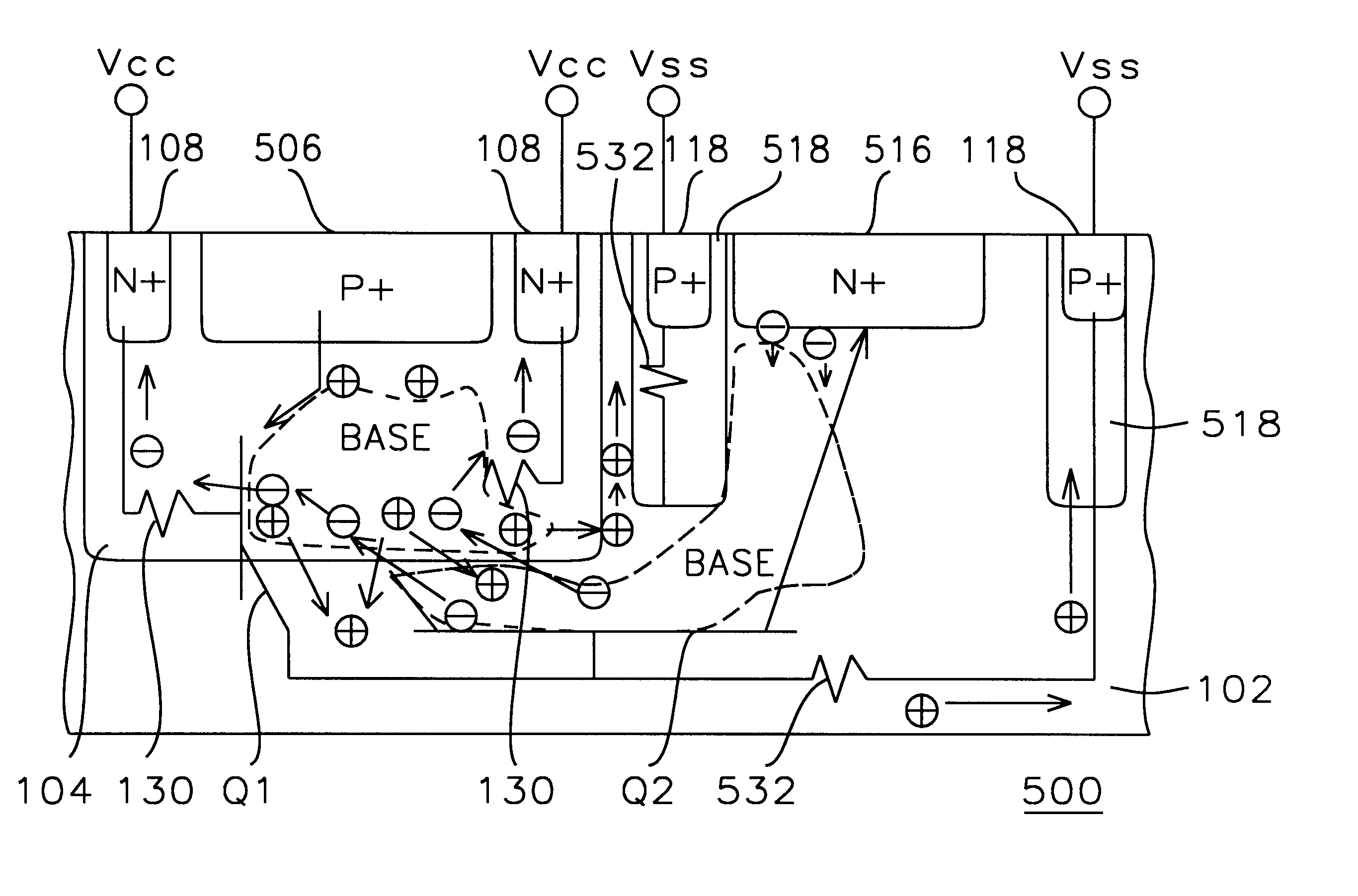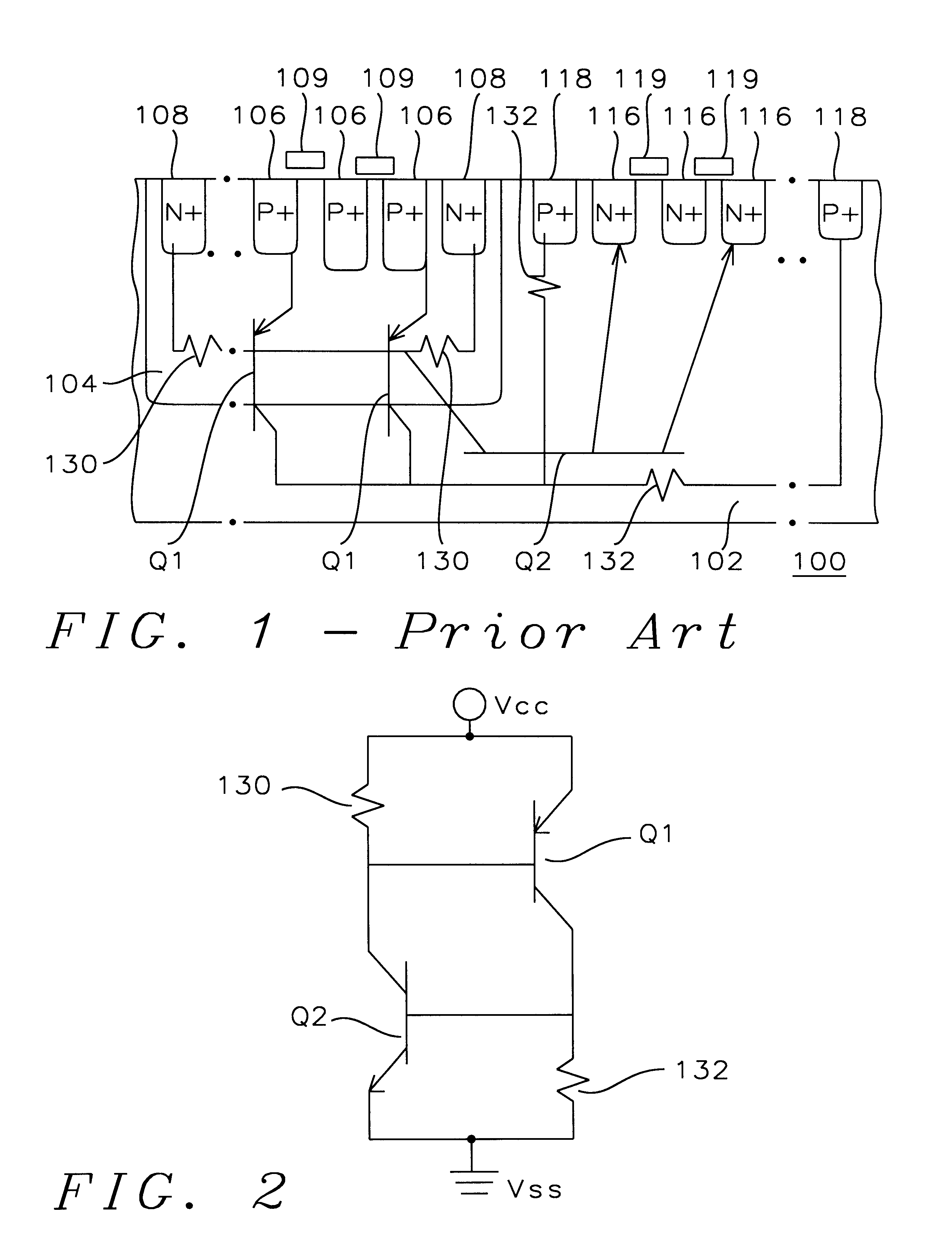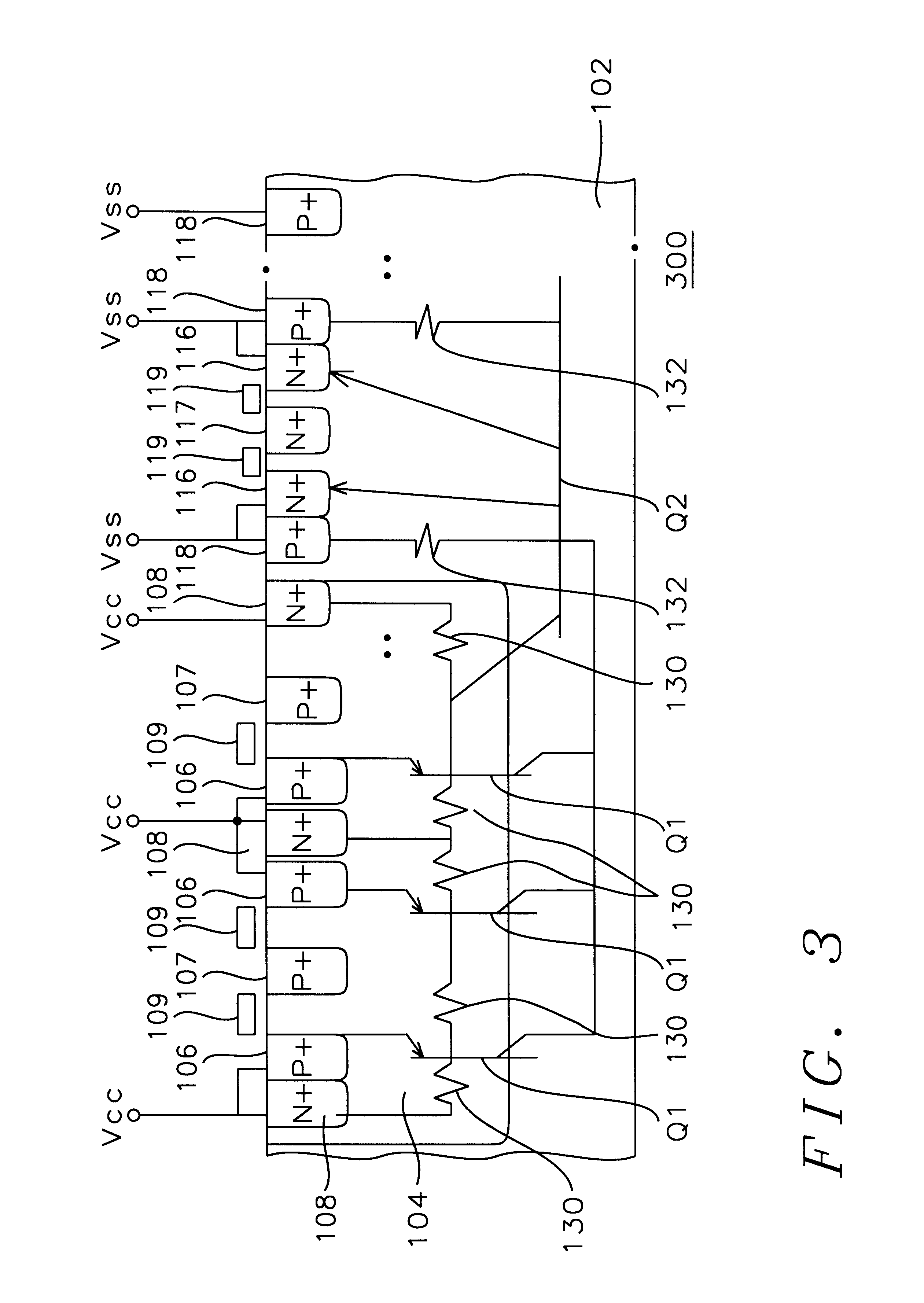Highly latchup-immune CMOS I/O structures
a cmos i/o and latchup technology, applied in the field of structures and methods of fabricating integrated cmos circuits, can solve the problems of shrinking device dimensions, increasing the problem of self-destructive latchup effect of cmos circuits, and increasing so as to improve the latchup immunity, improve the effect of latchup immunity and reduce the spacing between nmos and pmos devices
- Summary
- Abstract
- Description
- Claims
- Application Information
AI Technical Summary
Benefits of technology
Problems solved by technology
Method used
Image
Examples
Embodiment Construction
We now proceed with the description of a first preferred embodiment of the present invention by directing attention to FIG. 3. FIG. 3 shows a cross-sectional view of CMOS device layout 300. Embedded in a p-substrate 102 of a semiconductor wafer is an n-well 104 containing p+ source regions 106 and p+ drain regions 107. N+ guard-rings 108 surround individual regions 106 and 107, where regions 106 and 107 make up one or more p-channel transistors. N+ guard rings 108 and p+ source regions 106 are tied to a voltage supply V.sub.cc. Similarly, n+ source regions 116 and n+ drain regions 117 are formed in the p-substrate 102. P+ guard rings 118 surround individual regions 116 and 117, where regions 116 and 117 make up one or more n-channel transistors. P+ guard rings 118 and n+ source regions 116 are tied to voltage supply V.sub.ss which is more negative than V.sub.cc. Gates 109 are indicated straddling regions 106 and 107. Gates 119 similarly straddle regions 116 and 117. Q1 is a vertical...
PUM
 Login to View More
Login to View More Abstract
Description
Claims
Application Information
 Login to View More
Login to View More - R&D
- Intellectual Property
- Life Sciences
- Materials
- Tech Scout
- Unparalleled Data Quality
- Higher Quality Content
- 60% Fewer Hallucinations
Browse by: Latest US Patents, China's latest patents, Technical Efficacy Thesaurus, Application Domain, Technology Topic, Popular Technical Reports.
© 2025 PatSnap. All rights reserved.Legal|Privacy policy|Modern Slavery Act Transparency Statement|Sitemap|About US| Contact US: help@patsnap.com



